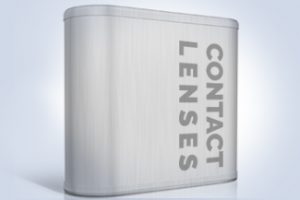Over 1 in 5 adults wear contact lenses, but there are still many myths about these life-changing optical devices.
Despite the fact that contact lenses have helped millions of individuals correct their vision problems, there are many misconceptions about them. These myths are stopping some people from choosing contact lenses for personal use.
We wanted to debunk some common contact lens myths and provide you with the facts.
1. Myth: Contact lenses aren’t for all ages
Fact: Contact lenses can be worn by anyone over the age of 8.
In the end, it comes down to a child’s motivation to wear lenses, responsibility, and maturity. For older people, contact lenses, rather than reading glasses, may be preferred.
2. Myth: Contact lenses can get lost behind your eye
Fact: It’s physically impossible for a contact lens to get lost behind your eye.
The lens is kept from moving behind your eye by a thin membrane that covers the outside part of your eye and connects to your eyelids.
The lens may slip out of place, but a few forceful blinks will usually reposition it or cause it to fall out, allowing you to place it in its proper location.
3. Myth: Contact lenses can get stuck on the eye
Fact: Contact lenses should not stick to your eye if you follow your eye doctor’s instructions for proper wear, care, and removal.
Soft contact lenses can temporarily stick to your eye if they dry out or if you fall asleep with them in your eyes. Usually a few drops of contact lens solution will loosen them, allowing you to remove them.
4. Myth: Contact lenses can pop out of the eye
Fact: Contact lenses that are properly fitted should never pop out or fall out of your eye.
The only way a contact lens can move is if it relocates to another part of your eye. Blinking a few times or closing your eyelid and lightly pressing on it should prompt the lens to return to its original position.
5. Myth: Contact lenses are uncomfortable
Fact: Modern contact lenses are designed to make them extremely comfortable to use and wear comfortably all day.
When you first put lenses on, they may feel strange, but you will quickly get used to them.
If another issue, like dry eye, makes wearing lenses uncomfortable, there are ways to hydrate your eyes so that your lenses don’t irritate them.
In addition, if your lenses aren’t properly fitted, they can be uncomfortable, which is why you should always go to an eye doctor for a contact lens fitting.
SEE RELATED: Contact Lenses for Reading
Schedule a contact lens fitting with an eye doctor near you, so you can wear contact lenses comfortably.
6. Myth: It’s difficult to care for contact lenses
Fact: Most contact lenses can now be cleaned and stored with a single multi-use solution.
Furthermore, daily disposable contact lenses eliminate the need for lens care because they are discarded at the end of the day.
7. Myth: They don’t make contact lenses for me
Fact: Contact lenses have advanced greatly in recent decades, and there are now contact lenses available for almost all sorts of vision problems, including high prescriptions.
There was a time when contact lens choices were limited, which meant that many individuals couldn’t wear them.
Even if you’ve been informed in the past that contacts aren’t a good fit for you, it’s worth asking again to see if there have been any recent updates in contact lenses for your specific needs.
8. Myth: Contact lenses can cause eye diseases
Fact: Contact lenses don’t cause eye diseases in and of themselves.
However, if you don’t clean your lenses correctly or don’t use them as recommended, you’re increasing your risk of infection.
Wearing contact lenses is safe for your eyes and eyesight as long as you clean and care for your lenses correctly and follow your eye doctor’s directions.
9. Myth: It’s hard to put contact lenses in and take them out
Fact: Many patients worry that they won’t be able to put their lenses in or take them out, but it takes very little time to learn.
Plus, when you go to your eye doctor to pick up your lenses, they will show you how to properly insert and remove them.
10. Myth: You can wear contact lenses while swimming or showering
Fact: Contaminants and germs abound in swimming pools and tap water. If you wear contact lenses while swimming, showering or in a jacuzzi, you’re more likely to get an eye infection.
For example, Acanthamoeba, a naturally occurring amoeba, can be found in a variety of water sources, including swimming pools. If the parasite infects your eye, it can cause pain and, in the worst-case scenario, necessitate a corneal transplant.
Contact lenses can be a lot more convenient than glasses, and they might even make you feel more confident in your appearance. Don’t let these myths scare you away from wearing contact lenses.
LEARN MORE: Guide to Contact Lenses
Contact an eye doctor near you to learn more about contact lenses.
Contact lenses have helped millions of people correct their vision problems, there are many misconceptions about them. Speak with your eye doctor about any further questions or concerns you may have.









